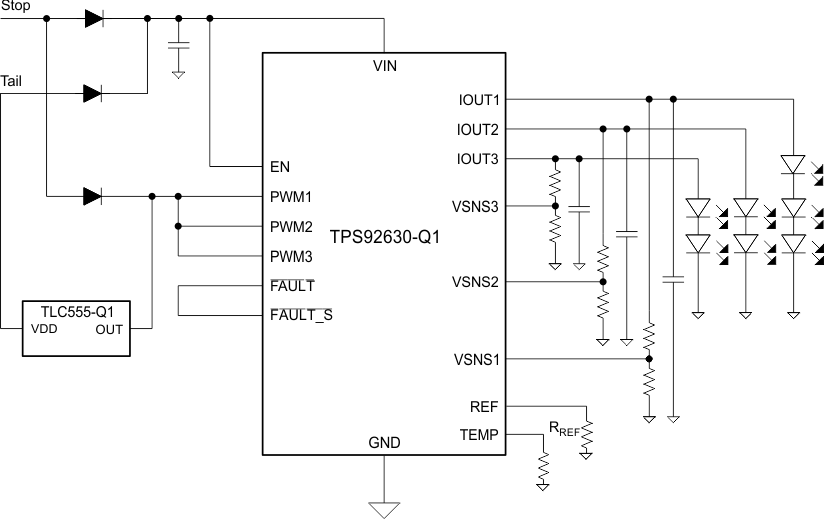SLVSC76E February 2014 – May 2018 TPS92630-Q1
PRODUCTION DATA.
- 1 Features
- 2 Applications
- 3 Description
- 4 Typical Application Schematic
- 5 Revision History
- 6 Description (Continued)
- 7 Pin Configuration and Functions
- 8 Specifications
- 9 Parameter Measurement Information
- 10Detailed Description
- 11Applications and Implementation
- 12Power Supply Recommendations
- 13Layout
- 14Device and Documentation Support
- 15Mechanical, Packaging, and Orderable Information
Package Options
Mechanical Data (Package|Pins)
- PWP|16
Thermal pad, mechanical data (Package|Pins)
- PWP|16
Orderable Information
11.2.1 Stoplight and Taillight Application With PWM Generator
Another easy way to achieve the different brightness is dimming by pulse-width modulation (PWM), which holds the color spectrum of the LED over the whole brightness range. The maximum current that passes through the LED is programmable by sense resistor RREF.
Figure 26 shows the application circuit of the stoplight and taillight including an automotive-qualified timer, TLC555-Q1, the duty cycle of which is programmable by two external resistors. One can see that driving the STOP signal high pulls the PWM pin constantly high, creating 100% duty cycle. Thus the LEDs operate at full brightness. When the TAIL signal is high, the LEDs operate at 50% brightness because the TLC555-Q1 timer is programmed at a fixed duty cycle of 50%.
